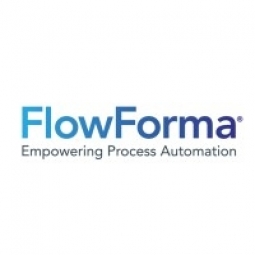Customer Company Size
Large Corporate
Country
- Worldwide
Product
- FlowForma Process Automation
Tech Stack
- Microsoft 365
- SharePoint
- Power BI
Implementation Scale
- Enterprise-wide Deployment
Impact Metrics
- Productivity Improvements
- Digital Expertise
Technology Category
- Platform as a Service (PaaS) - Application Development Platforms
Applicable Industries
- Cities & Municipalities
- National Security & Defense
Applicable Functions
- Human Resources
- Logistics & Transportation
Use Cases
- Remote Collaboration
- Remote Asset Management
Services
- Cloud Planning, Design & Implementation Services
- Software Design & Engineering Services
About The Customer
The customer is an international humanitarian aid agency that responds quickly and effectively to sudden and slow onset emergencies, sustaining lives and alleviating suffering. The agency operates in global trouble spots, including Syria and Haiti, with around three thousand volunteers working with affected communities to find and deliver solutions to meet their immediate needs. One of the challenges when working in these areas is maintaining internal communications due to the remote nature of the locations and the lack of reliable internet access.
The Challenge
The international humanitarian aid agency faced challenges in maintaining internal communications due to the remote and often internet-limited areas where they operate. The agency relied heavily on email and Excel for document sharing, leading to issues with version control and transparency. The agency needed a solution that would provide a single version of a document in a process that everyone understood to be the definitive record. The implementation of Microsoft 365 and SharePoint provided a single document repository, but the agency needed business process software to improve workflows and retain document integrity.
The Solution
The agency implemented FlowForma Process Automation, a no-code solution that runs in the cloud on SharePoint. The solution was chosen for its ability to be used by everyone in the agency, not just the tech-savvy individuals. The first process created was a Global Governance Requirement process, used by 1,800 people. The solution transformed the agency's Conflict of Interest policy process, making every step transparent and auditable. Other processes implemented include a HR onboarding process, a flight booking approval system, and a system for managing payment requests in Syria. The solution has cut through the complexity of reaching people in difficult corners of the world and is a key part of the organization’s digital transformation strategy.
Operational Impact
Quantitative Benefit

Case Study missing?
Start adding your own!
Register with your work email and create a new case study profile for your business.
Related Case Studies.

Case Study
Turning A Stadium Into A Smart Building
Honeywell created what it called the “intelligent system” for the National Stadium in Beijing, China, turning the venue for the opening and closing events at the 2008 Summer Olympics into a “smart building.” Designed by highly controversial artist Ai Weiwei, the “Bird’s Nest” remains one of the most impressive feats of stadium architecture in the world. The 250,000 square meter structure housed more than 100,000 athletes and spectators at a time. To accommodate such capacity, China turned to Honeywell’s EBI Integrated Building Management System to create an integrated “intelligent system” for improved building security, safety and energy efficiency.
.png)
Case Study
Smart Street Light Network (Copenhagen)
Key stakeholders are taking a comprehensive approach to rethinking smart city innovation. City leaders have collaborated through partnerships involving government, research institutions and solution providers. The Copenhagen Solutions Lab is one of the leading organizations at the forefront of this movement. By bringing together manufacturers with municipal buyers, the Copenhagen Solutions Lab has catalyzed the development and deployment of next-generation smart city innovations. Copenhagen is leveraging this unique approach to accelerate the implementation of smart city solutions. One of the primary focus areas is LED street lighting.

Case Study
Buoy Status Monitoring with LoRa
The Netherlands are well-known for their inland waterways, canals, sluices and of course port activities. The Dutch Ministry of Infrastructure indicates that there are thousands of buoys and fixed items in and near water environments that would profit from IoT monitoring. One of the problems with buoys for example, is that they get hit by ships and the anchor cable breaks. Without connectivity, it takes quite some time to find out that something has happened with that buoy. Not to mention the costs of renting a boat to go to the buoy to fix it. Another important issue, is that there is no real-time monitoring of the buoys at this moment. Only by physically visiting the object on the water, one gains insight in its status.

Case Study
Barcelona Case Study
Barcelona’s heavy traffic and its associated high levels of pollution were the primary factors that motivated some companies and universities to work on strategies for improving traffic in the city centre. Bitcarrier is one of the technologies involved in the In4Mo Project, whose main objective is to develop the applications that form the core of smart mobility, one of the fundamental pillars of the smart city concept.

Case Study
China Mobile Smart Parking
Smart Parking, powered by NB-IoT technology, is making it easier for drivers to find free parking spots. Cities can better manage their parking assets and maximize the revenue available to them as a result. Drivers searching for parking create congestion and pollution by circling and hunting for available parking. Smart Parking services are able to significantly ease these problems by guiding a driver directly to a parking space.








